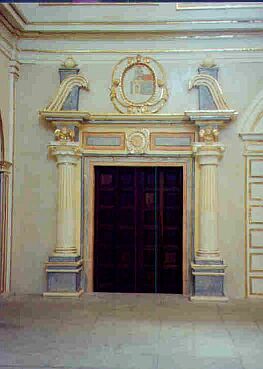
[This is a special article about a special place; a place so visual in its impact that only photos can possibly tell the story - and even then, there is so much left unsaid (unpictured).]
|

|
The fine details of restoration can be seen in this doorway at the Regional Museum. One can also see the opulence that so incensed the revolutionaries of 1910, and resulted in the confiscation of all church property. Only in the last decade has the Méxican government come to terms with the contemporary Catholic church. One result has been large outlays of government money to restore ex - convents such as this one to their former splendor, for use of the public in general. [All photos by Diana Ricci] [This is a special article about a special place; a place so visual in its impact that only photos can possibly tell the story - and even then, there is so much left unsaid (unpictured).]
|
In August of 1998, amid much official fanfare and festivities, and after four years of restricted access and outright closings, what was the "Regional Museum" reopened as the Oaxaca Cultural Center. Located in the ex-convent of the Church of Santo Domingo, the new museum has been designed to be a multi-use municipal building
A vast and sprawling complex, the Center constantly surprises the visitor, with hallways inside of hallways, windows with magnificent views of the mountains, the surrounding neighborhood, the gardens and the interior courtyard. Until 1992, the ex-convent was used as an army base. It reverted to the city when the army moved to new, larger quarters. Until a year ago, we lived a block away from the ex-convento, and the tick-tick-tick of masons' hammers were the music of our days and nights, as hundreds of workers labored around the clock shaping stones, some as big as sofas.
|
All materials copyrighted, 1994-2006 by Stan Gotlieb and tomzap.com |